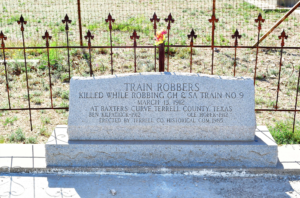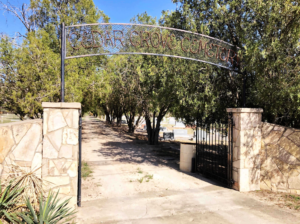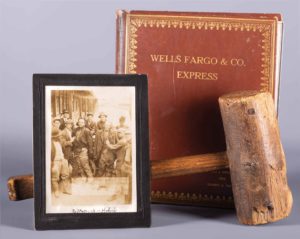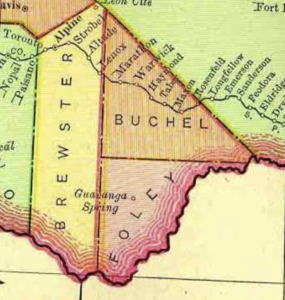 Wait . . . Buchel County? Nope, you’re not losing your marbles. There’s no Buchel County in the Lone Star State! Both Buchel and Foley Counties were absorbed into Brewster County – now the largest county in Texas – when their populations failed to flourish as well as expected.
Wait . . . Buchel County? Nope, you’re not losing your marbles. There’s no Buchel County in the Lone Star State! Both Buchel and Foley Counties were absorbed into Brewster County – now the largest county in Texas – when their populations failed to flourish as well as expected.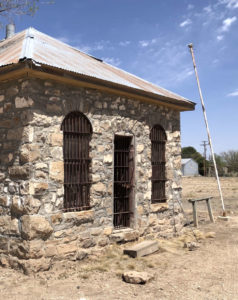
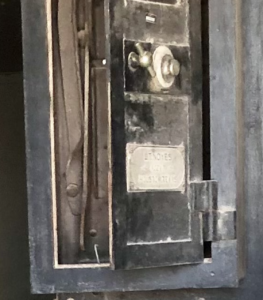 Now this is pretty neat for fans of old-times Texas. Lucius T. Noyes was an agent for the Diebold Safe & Lock Company of Canton, Ohio. From his Houston office on the corner of Congress Avenue and San Jacinto Street he established a far reaching reputation in the world of “security.”
Now this is pretty neat for fans of old-times Texas. Lucius T. Noyes was an agent for the Diebold Safe & Lock Company of Canton, Ohio. From his Houston office on the corner of Congress Avenue and San Jacinto Street he established a far reaching reputation in the world of “security.” 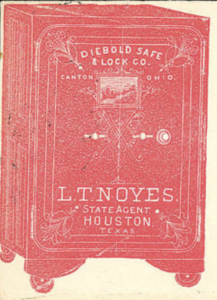
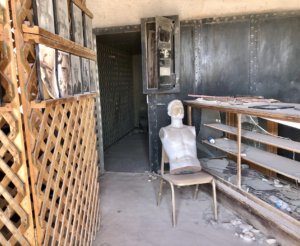 Stealing a peek through the door and windows, it looks like there might have been a museum at Marthon’s little jail at some point, and the decaying remnants are admittedly a bit creepy. That mannequin will definitely take you off guard, but you can clearly see the jail cells, photos of what are probably local lawmen of the past on the wall, and broken display cases – whose contents I can only hope were safely removed before the damage. I’d love to see this “attraction” re-opened for a closer look.
Stealing a peek through the door and windows, it looks like there might have been a museum at Marthon’s little jail at some point, and the decaying remnants are admittedly a bit creepy. That mannequin will definitely take you off guard, but you can clearly see the jail cells, photos of what are probably local lawmen of the past on the wall, and broken display cases – whose contents I can only hope were safely removed before the damage. I’d love to see this “attraction” re-opened for a closer look.
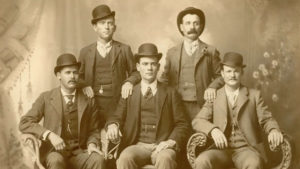
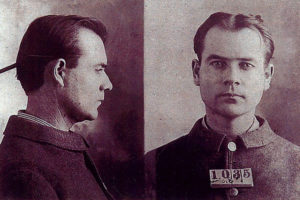 After a failed train robbery that ended in several of the members being caught, Kilpatrick fled to Robber’s Roost in Utah and joined the Wild Bunch. After some success, he and his girlfriend Laura Bullion made their way to St, Louis where they were arrested. Kilpatrick was seated to 15 years in prison for robbery, and Laura was sentence to five. After serving 31/2 years she was released, and went to Tennessee under an assumed name to make a new life.
After a failed train robbery that ended in several of the members being caught, Kilpatrick fled to Robber’s Roost in Utah and joined the Wild Bunch. After some success, he and his girlfriend Laura Bullion made their way to St, Louis where they were arrested. Kilpatrick was seated to 15 years in prison for robbery, and Laura was sentence to five. After serving 31/2 years she was released, and went to Tennessee under an assumed name to make a new life.
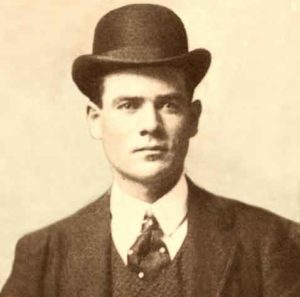 Kilpatrick was so busy filling a bag with $60,000 he didn’t see Trousdale sneak up to hit him over the head with the mallet. (Ouch!) The outlaw was killed with the one blow. Trousdale took the bandit’s gun and returned to the engine where he shot and killed Hobek just after midnight.
Kilpatrick was so busy filling a bag with $60,000 he didn’t see Trousdale sneak up to hit him over the head with the mallet. (Ouch!) The outlaw was killed with the one blow. Trousdale took the bandit’s gun and returned to the engine where he shot and killed Hobek just after midnight.